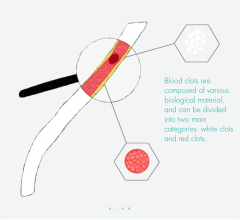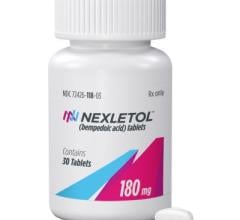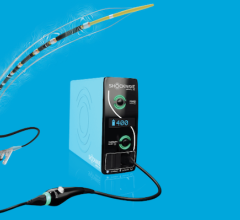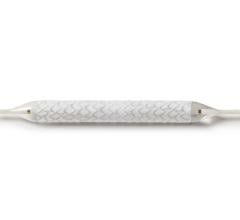
November 20, 2012 — Cordis Corp. announced that the U.S. Food and Drug Administration (FDA) has approved the S.M.A.R.T. Control Vascular Stent Systems for use in the superficial femoral artery (SFA) and/or the proximal popliteal artery (PPA). The S.M.A.R.T. Stent, which has been approved for peripheral indication in international markets since 1999, is now the first stent in the United States with both Iliac and SFA indications.
The clinical data supporting the FDA approval of the S.M.A.R.T. Stent for use in the peripheral vasculature was obtained through the STROLL Investigational Device Exemption (IDE) trial that enrolled 250 patients at 39 clinical sites within the United States. In the study, freedom from clinically driven target lesion revascularization (TLR) at one year was 87.4 percent. The 12-month primary patency rate for the S.M.A.R.T. Stent was 81.7 percent by Kaplan Meier estimate. The study results show no major adverse events at 30 days and a low one-year stent fracture rate of 2 percent. In addition, all stent fractures were Type I, least severe, and there were no incidents of more severe stent fractures (Type II-V).
"The STROLL trial demonstrates one year patency rates of ~81% and a very low fracture rate,” said William A. Gray, director of Endovascular Services, Cardiovascular Research Foundation, New York, and co-national principal investigator of the STROLL study. “These outcomes both meet and exceed our expectations for patients with symptomatic disease of the superficial femoral artery."
In addition to the excellent clinical outcomes in the STROLL study, Health Related Quality of Life (QOL) Surveys also showed an improvement in patient outcomes. This included minimal or no signs of PAD in three of four patients (as measured using Rutherford-Becker classification), and normal Ankle Brachial Index (ABI) in four of five patients at one year.
“We are very pleased to offer an expanded indication for the S.M.A.R.T. Stent,” said Shlomi Nachman, worldwide president, Cordis Corporation. “Our goal is to continue to make expanded indications and new products available to our customers so they may bring these innovations to their patients.”
One of the most common vascular diseases, peripheral arterial disease (PAD), occurs when leg arteries become narrowed or blocked by plaque. These blockages can result in severe pain, limited physical mobility and non-healing leg ulcers. According to the American Heart Association, approximately 10 million people in the United States suffer from PAD.
The STROLL study and the SFA indication for the SMART Stent represent the latest commitments by Cordis to continue its groundbreaking work in the fight against vascular disease.
For more information: www.cordis.com


 December 16, 2024
December 16, 2024 








